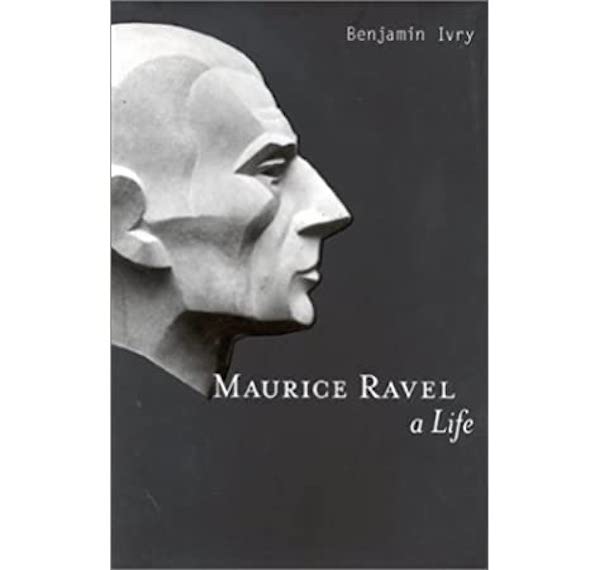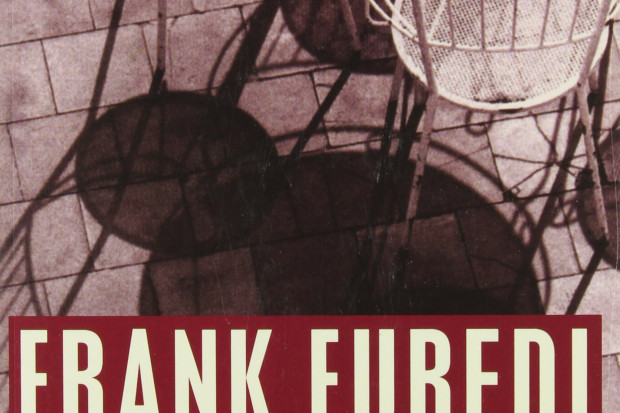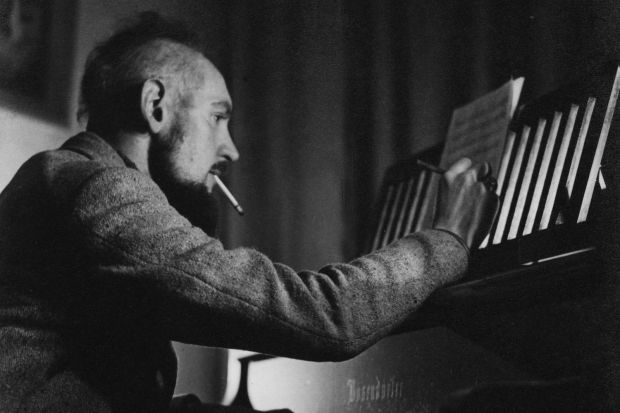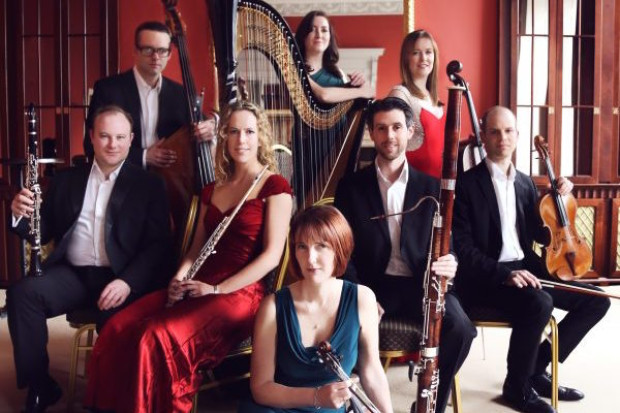
The Unknown Ravel
One might say the French composer Maurice Ravel remains unknown. Not the music, of course – Boléro alone could probably be claimed as the most popular piece of classical music today; and performances of the Pavane pour une infante défunte, Rapsodie espagnole, La Valse, Alborada del gracioso, Shéhérazade and so on ensure that the name of Ravel is among those most frequently seen on concert programmes and radio listings. But the man who wrote the music is, to a large degree, unknown and his life suffers from a number of biographical myths and misinterpretations which the years since his death in 1937 have done little to correct. Perhaps the most misleading is the extent to which he continues to be linked with Debussy in general histories of music, as a sort of additional Impressionist. And while Debussy is invariably lauded as a musical radical, and herald – with Stravinsky and Schönberg – of modernity, Ravel is dismissed as merely a follower of fashion, a petit maître.
Space does not permit a comprehensive examination of the bases on which assessments of Ravel’s life and works are made. But it is worth observing that these views of Ravel have a wide currency largely because of the comparative dearth of biographies, especially in English. There has been no full-length study since Arbie Orenstein’s Ravel, Man and Musician in 1975, and that work necessarily concentrated as much on his music as on the life. As yet there is no translation of Marcel Marnat’s 1986 work; though reputedly dull, at over 800 pages it at least lays claim to being the most comprehensive account of Ravel’s life to date. And facts are always to be valued where the subject is as elusive a man as Ravel was.
In this context, therefore, it is unfortunate to say the least that a new biography by the American writer Benjamin Ivry is such a disappointment. Author of a serviceable work on Poulenc in Phaidon Press’s ‘20th Century Composers’ series, Ivry clearly has a knowledge of and interest in early twentieth-century French culture and brings a formidable array of social and cultural references to bear upon his task. But the project is seriously compromised from the outset by the narrow focus Ivry insists upon.
Most modern musical biographers seem unable to write their works without embracing one of three modes. The most common of these might be described as the ‘academic’ approach and is dutifully followed by those commissioned to write for the various university presses and serious publishers. Its hallmarks are copious use of musical examples (preferably amplified by diagrams and graphs) and a text studded with musical analysis of the most relentless kind. The second approach one might call ‘populist’ if that term did not imply some kind of insult to the general reading public. Here the interest lies with the composer’s life and the exposure – in the interests of truth, of course - of long-hidden or hitherto unexamined scandals or habits, preferably sexual. The aspiration, naturally, is that sales will be commensurate with salaciousness. The music, in this case, functions as a kind of attractive background hum while the dirt is dished.
The third type I will call the ‘thesis’ biography and it very often derives from a quasi-psychological study of the composer, which is then used to explain his output. Writers might speculate along the lines of ‘Schumann’s madness as demonstrated in his harmonies’ or ‘New incontrovertible evidence of anti-Semitism in Wagner’s operas’. I may exaggerate somewhat, but there is abundant evidence in the realm of musicological research that psychological speculation is the fashionable vice among the current generation of scholars. Which bring me back to Mr Ivry. His book is best described as a hybrid of the second and third categories in that it pursues a thesis, but also retails, or attempts to retail, a kind of secondhand gossip about Ravel’s life in order to ‘prove’ this thesis. The thesis is a simple one - that Ravel was homosexual; the gossip requires a little sifting.
A composer’s sexuality is a perfectly legitimate subject for a biographer to explore. Indeed, there are sound reasons for believing that creativity is very centrally linked to the sexual nature of any creator, and to avoid the issue is as misleading as to concentrate on it exclusively. But the biographer of Ravel is faced with a serious lack of evidence - of any kind - when it comes to the composer’s sexuality. Certainly, Ravel had no relationships in the conventional sense of that word. He himself regarded the artist as unfit for marriage and is on record as opining that ‘love never rises above licentiousness.’ No one has recorded any knowledge, even at second-hand, of Ravel’s sexual life, if indeed there was any at all. Manuel Rosenthal claims that he proposed marriage to Hélène Jourdan-Morhange, who was a close friend, but she turned him down. Ralph Vaughan Williams records that Ravel took him to a Parisian brothel and seemed on friendly terms with the girls, though they were, he said ‘guaranteed not to tempt any man to lose his virtue’. Finally, Ravel made no secret of the central place his mother played in his life and his creative silence in the three years after her death is testimony to the depth of his loss. From all this the most reasonable conclusion one might draw is that Ravel was probably heterosexual, incapable of forming (or unwilling to form) a relationship with a woman, and probably sought sexual relief by using the services of prostitutes. This conclusion, however, will not do for Benjamin Ivry who is convinced Ravel was gay and is going to prove it to the world. How does he know this? Well, first of all, the (gay) American composer David Diamond told him so. How does David Diamond know? Because he met Ravel in 1928 during Ravel’s tour of America.
Diamond recalled the composer’s greeting with emotion: ‘He pulled me in to him, I felt I liked him, he embraced me, gave me a kiss on both cheeks, and kissed me on the neck. From the age of eight I had always known I liked boys, and I was so touched that he kissed me on the neck that I can still feel that kiss.’ When Diamond went to study in France, he became friends with André Gide and told the writer that he’d gone to see Ravel. ‘Et alors?’ Gide asked, alluding to the mystery of Ravel’s sexuality. Diamond told Gide, ‘He gave me a kiss.’ ‘Where, when?’ exclaimed the fascinated Gide. Diamond added, ‘I feel in my heart that he likes me a lot.’ Gide replied, nodding his head, ‘Not bad, not bad at all.’
I should add that Diamond was all of thirteen when he met Ravel, and naturally in a position to make definitive judgments about a man from a different generation and culture on the basis of a few hour’s acquaintance. And the anecdote tells us infinitely more about André Gide’s appetite for gossip than about Ravel’s sexual life.
From this starting point, a web of mays and mights and suggests is spun. Ivry seems to regard the fact that the artistic community of fin-de-siècle Paris contained a large number of homosexual men as a matter for comment. I would have thought that the absence of homosexual men might have been more newsworthy. But it is necessary for his thesis that Ravel’s milieu is presented as gay and much is made of the bachelor status of many of the Apaches, Ravel’s group of friends and musical collaborators. For instance, we are given the sexual history of Léon-Paul Fargue whose affair with playwright and provacateur Alfred Jarry was - or so Ivry claims - public knowledge. Ivry wonders ‘whether or not Fargue’s friendship with Ravel included sex’ - on the basis that Fargue compared Ravel to Leonardo da Vinci. Tristan Klingsor, whose verses Ravel sets in Shéhérazade is described (in a phrase which should be outlawed) as a ‘known homosexual’; and the fact that Ravel changes the phrase ‘Arab pipe’ to ‘old Arab cup’ in his setting of ‘L’indifferent’ from that cycle is cited as ‘a discreet avowal of homosexuality’. Ravel writes L’Heure espagnole, essentially a sex farce, in order to reassure his father that he is heterosexual: ‘[it] possibly reassured his father but was no more sincere then Ravel thought any art should be. The falseness of his heterosexual posturing would have made it all the more artistically viable according to his aesthetic.’ We will pass over the fact that Ravel’s father seems to have been experiencing some kind of premature senility during the last years of his life, and was in all probability unaware which work his son was writing at any particular time. More to the point, L’Heure espagnole was produced in 1911, three years after Joseph Ravel’s death. Any reassurance about his son was therefore entirely academic.
I could continue to detail this catalogue of hypotheses and suggestions but there is a more important point to make, and one which is not limited solely to this context. In a quest for ‘truth’, something more important is often lost, namely the admixture of passions and contradictions, paradoxes and convictions, which make up the personality of any human being. These traits are very often still more pronounced in creative artists (or, at least, find their expression in sometimes strange ways); the task is to find a convincing context in which to place them. Ivry may quite possibly be right in his assessment of Ravel’s sexuality, but he fails to convince with the evidence he presents and in pursuit of it he manages to lose his subject, the juggernaut of his theories crushing underfoot what little of Ravel’s personality can be gleaned from anecdote and memoirs. The cumulative effect, ironically, is to rob Ravel of any sense of complex humanity - and Ivry’s intention, one assumes, was to add to our understanding of it.
On the purely musical front too, there are some strange assertions: ‘[the Sonatine] represents an advance on Jeux d’eau’; or ‘Valses nobles et sentimentales asks more oblique questions than it answers, and its emotional complexity is Jamesian in breadth of cultural reference’. In the first case I cannot imagine what he means, since the two works have almost nothing in common other than their composer and the medium of the piano. The second opinion simply left me gasping in admiration at its sheer pretentiousness, and can be regarded as indicative of the tone of much of the book. Certainly, there is little in it which manages to capture the quixotic nature of Ravel’s personality; I believe the following passage from the reminiscences of the violinist Hélène Jourdan-Morhange captures more of the composer than many of Mr Ivy’s pages:
After the concert I saw coming towards me, mumbling to himself quietly, a slim, precise, nervous little man with graying hair, whose sparkling eyes and pointed nose reminded me of a good-looking fox: it was Maurice Ravel. He gave an official bow and ceremoniously kissed my hand. He said nothing about our interpretation of the [Piano] Trio, but lavished all his praise on the cellist Delgrange and the splendid piano playing of Robert Schmitz. I thought my own playing had displeased him and I was glad he did not hold it against me. A few minutes later Delgrange came rushing towards me in a huff: ‘I must say, your friend Ravel is charming! For ten minutes all he would talk about was your tone, and how good Schmitz was.’ Schmitz likewise had heard no praise except of his two colleagues ….
Maurice Ravel: A Life by Benjamin Ivry (New York: Welcome Rain, 2000)
Published on 1 January 2002
Garret Cahill works in the Boole Library in University College, Cork.















